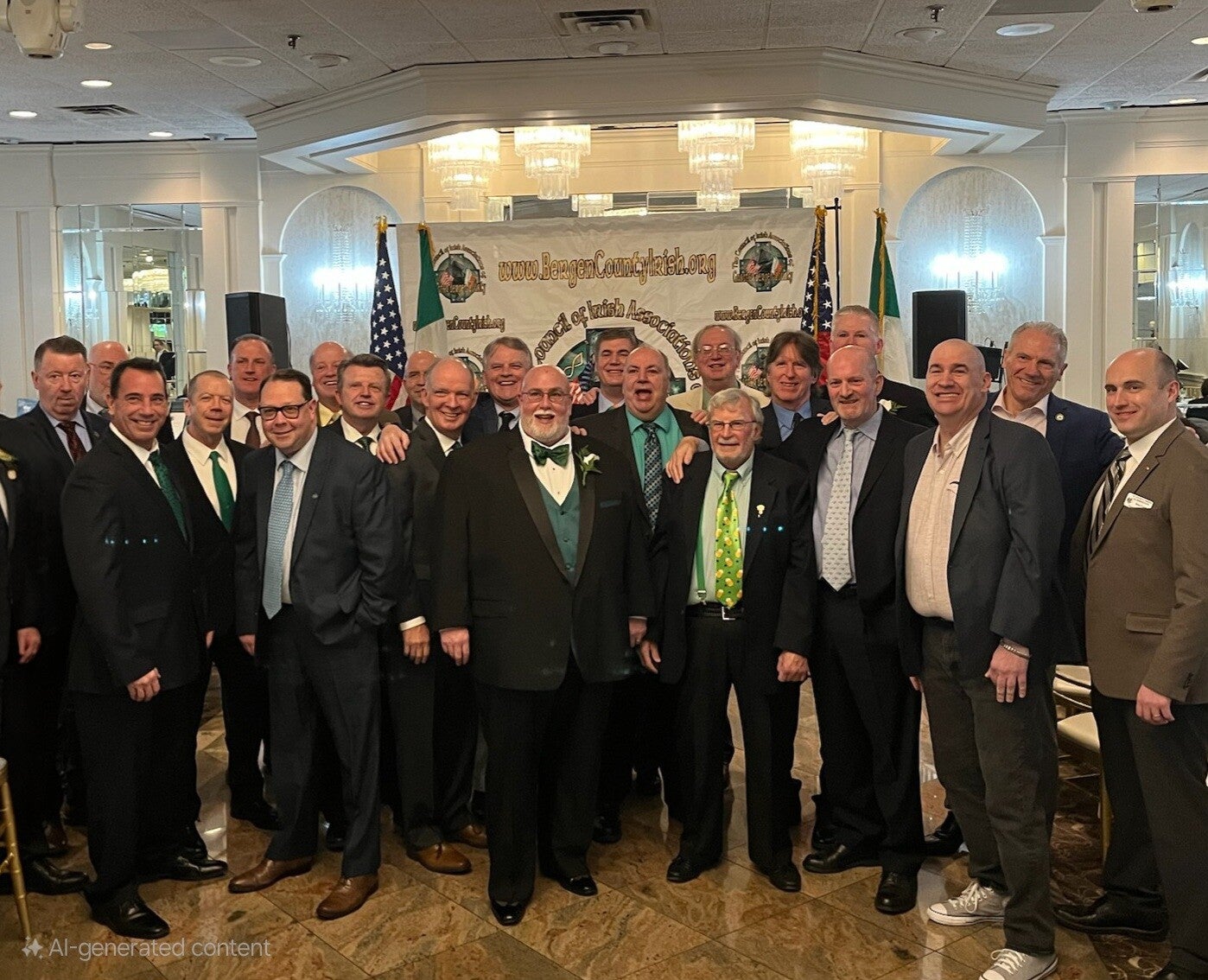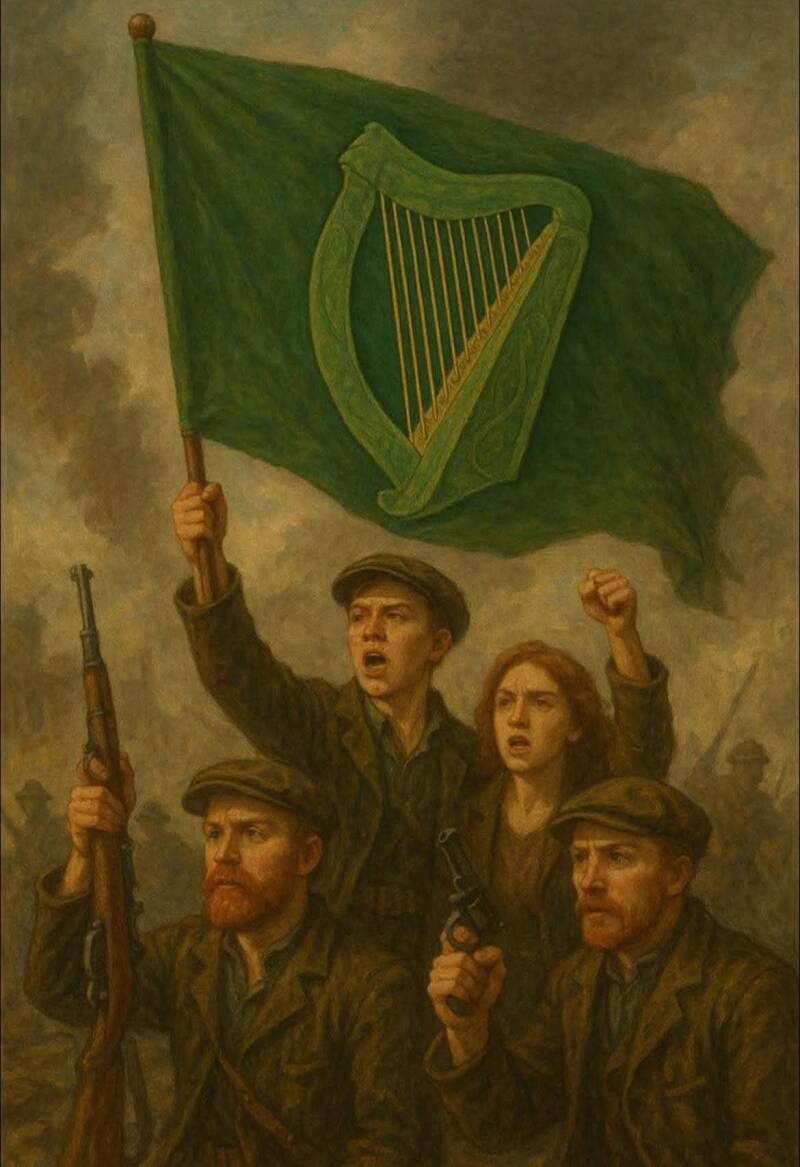About Us

The Bergen County New Jersey Chapter of the Ancient Order of Hibernians has been established in River Edge, NJ. It is the only active AOH Chapter in Bergen County. The Chapter currently has 125 members. The organization is dedicated to uniting Irish Catholic men in Friendship, Unity, and Catholic Charity.
Fr. Solanus Casey-Bergen Division 32 AOH is inspired by the life and example of Fr. Solanus Casey. The son of Irish immigrants, he was known for his compassion, humility, and unwavering faith. We strive to emulate his virtues in all that we do, serving as a beacon of hope and support in our community.
Blessed Solanus Casey’s Story
Barney Casey became one of Detroit’s best-known priests even though he was not allowed to preach formally or to hear confessions!
Barney came from a large family in Oak Grove, Wisconsin. At the age of 21, and after he had worked as a logger, a hospital orderly, a streetcar operator, and a prison guard, he entered St. Francis Seminary in Milwaukee—where he found the studies difficult. He left there, and in 1896, joined the Capuchins in Detroit, taking the name Solanus. His studies for the priesthood were again arduous.
On July 24, 1904, Solanus was ordained, but because his knowledge of theology was judged to be weak, he was not given permission to hear confessions or to preach. A Franciscan Capuchin who knew him well said this annoying restriction “brought forth in him a greatness and a holiness that might never have been realized in any other way.”
During his 14 years as porter and sacristan in Yonkers, New York, the people there recognized Solanus as a fine speaker. James Derum, his biographer writes, “For, though he was forbidden to deliver doctrinal sermons, he could give inspirational talks, or feverinos, as the Capuchins termed them.” His spiritual fire deeply impressed his listeners.
Father Solanus served at parishes in Manhattan and Harlem before returning to Detroit, where he was porter and sacristan for 20 years at St. Bonaventure Monastery. Every Wednesday afternoon he conducted well-attended services for the sick. A co-worker estimates that on the average day 150 to 200 people came to see Father Solanus in the front office. Most of them came to receive his blessing; 40 to 50 came for consultation. Many people considered him instrumental in cures and other blessings they received.
Father Solanus’ sense of God’s providence inspired many of his visitors. “Blessed be God in all his designs” was one of his favorite expressions.
The many friends of Father Solanus helped the Capuchins begin a soup kitchen during the Depression. Capuchins are still feeding the hungry there today.
In failing health, Solanus was transferred to the Capuchin novitiate in Huntington, Indiana, in 1946, where he lived for ten years until needing to be hospitalized in Detroit. Father Solanus died on July 31, 1957. An estimated 20,000 people passed by his coffin before his burial in St. Bonaventure Church in Detroit.
At the funeral Mass, the provincial Father Gerald said: “His was a life of service and love for people like me and you. When he was not himself sick, he nevertheless suffered with and for you that were sick. When he was not physically hungry, he hungered with people like you. He had a divine love for people. He loved people for what he could do for them—and for God, through them.”
Solanus Casey was declared Venerable in 1995, and beatified on November 18, 2017.

Our next Monthly Meeting will be November 13, 2025 7:30 pm Tommy Foxs Public House
Beyond The Ordinary
Upcoming Events
Upcoming State Board Meeting & Major Degree
The New Jersey State Board of the AOH will meet on Saturday, November 15th, 2025 at 11:00 AM at the Fair Haven Columbus Club, 200 Fair Haven Road, Fair Haven NJ 07704, and will be hosted by the Msgr. Joseph P. Casey Division 1, Monmouth County, NJ.
Immediately following the Board Meeting, the Isle of Erin Major Degree Team, with the approval of the New Jersey State Board, will exemplify the Major Degrees of our Order.
Here is a summary of the day's activities:
10:00 AM Sign In/Registration; Bagels, Coffee and Light Refreshments
11:00 AM NJ State Board Meeting Called to Order
12 Noon Exemplification of the Shamrock and Major Degrees
At the conclusion of the Degree ceremonies, there will be a luncheon/reception with a cash bar.
Important Details:
- All attendees (candidates and observers) must register at the Degree Team's website:
- Click on this link: https://www.isleoferin.com/
- Click on the Register button
- Answer each question
- NOTE: The second question on the form refers to the "Pennsylvania State Convention" as the location...SELECT THIS OPTION (The Degree Team knows where to show up!)
- Cost payable at sign-in: $35.00 for Candidates, $30.00 for Observers
- 2025 AOH membership cards required for all attendees; please have available for inspection and admittance. The Degree team will not confer the degree to anyone without a Travel Card, and Observers will not be admitted to the ceremony without proof of their degreed status.
- Dress code is business casual or AOH Division Uniform. This means absolutely NO tee shirts or shorts. Comfortable footwear is recommended. Officers at every level should wear their Medallions
- Consumption of alcoholic beverages is NOT permitted in the hall during the ceremony.

Did You Know...

The harp is the national symbol of Ireland because of its deep historical, cultural, and political significance. Here’s why it holds such an important place:
1. Ancient Heritage
The harp has been associated with Ireland for over a thousand years. It was a prominent instrument in Gaelic society, played by bards and poets who were highly respected as keepers of history and tradition. These harpers would perform for kings and chieftains, making the harp a symbol of nobility and cultural pride.
2. Medieval and Renaissance Use
By the 12th century, the harp was a well-established symbol of Irish identity. It appeared on Irish coinage as early as the 13th century and was used in various official and royal contexts, including under English rule in Ireland, where it was adapted into the Royal Coat of Arms of the United Kingdom to represent Ireland.
3. Resistance and Nationalism
During periods of English domination, particularly after the Tudor conquest, the harp became a symbol of Irish nationalism and resistance. It was used by rebel groups and in literature as a metaphor for the Irish spirit and cultural endurance.
4. Modern National Symbol
When Ireland became a Free State in 1922, the harp was chosen as the official national emblem. It appears on official government documents, Irish passports, coins, and the presidential seal. It’s also the logo of the Irish government and prominent institutions like Guinness and Ryanair (though in mirror image, since the state holds the rights to the official version).
5. Uniqueness
Ireland is the only country in the world that uses a musical instrument as its national symbol. This reflects the unique cultural emphasis the Irish place on music, poetry, and the arts.
So, the harp isn’t just a decorative symbol—it’s a powerful emblem of Irish identity, continuity, and resilience.



Check Out Our New Store For Parade and Meeting Apparel.
"The AOH has been a pillar of support in our community, providing assistance to those in need and fostering a strong sense of brotherhood."
Pete Smith
"I am grateful for the AOH's commitment to charitable work and their dedication to upholding the values of our faith. They truly make a difference."
Mary Johnson
"The AOH's events and gatherings have provided a welcoming space for fellowship and community building. I am proud to be a member."
Robert Williams
Contact us
Location
River Edge, NJ
United States